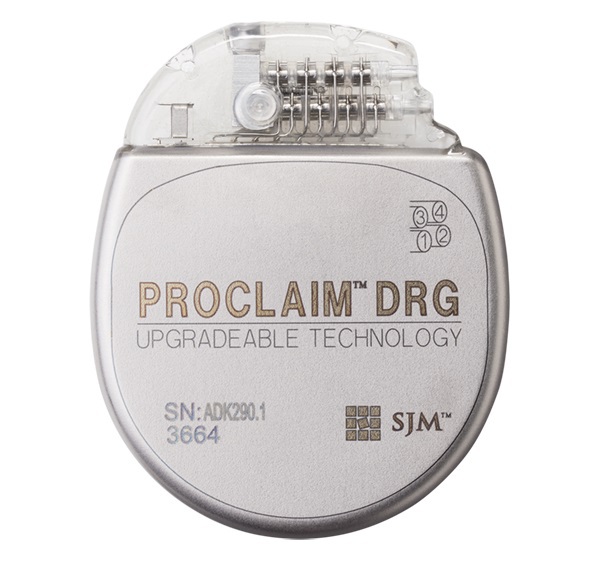Dorsal Root Ganglion Stimulation
Dorsal Root Ganglion Stimulation (DRG stimulation) offers a highly targeted approach to managing chronic nerve pain that affects specific, hard-to-treat areas of the body—such as the foot, knee, groin, or lower back. Unlike traditional spinal cord stimulation, DRG therapy focuses on the dorsal root ganglion, a structure that helps regulate pain signals before they enter the spinal cord. This precision allows for more consistent relief, especially in areas that haven’t responded well to other treatments.
Because it offers a trial phase, patients can experience the potential benefits before committing to a permanent system. For those seeking long-term relief from localized, neuropathic pain, DRG stimulation is a promising option

What is it?
Dorsal Root Ganglion (DRG) Stimulation is an advanced neuromodulation therapy that targets specific areas of pain by precisely stimulating the dorsal root ganglion, a cluster of neurons that process pain signals.
How is it performed?
The procedure is performed in two stages: a trial period and, if successful, permanent implantation. Under fluoroscopic guidance, thin leads are placed near specific dorsal root ganglia. The procedure typically takes 1-2 hours.
Technology Partners
Abbott’s Proclaim
Keypoint #1-Lorem Ipsum
Lorem Ipsum mon fringilla dolor felis amet fusce.
• Libero auctor
• Enim molestie iaculis
• Massa bibendum
• Ultrices varius
Metus euismod tellus penatibus in ex morbi euismod mollis.
Phasellus venenatis augue luctus sollicitudin elementum suspendisse.
Treatment Benefits
DRG stimulation is known for its ability to provide focused pain relief with fewer unwanted sensations in unrelated parts of the body. Patients often experience more stable pain control, improved mobility, and better quality of life. It’s also adjustable and reversible, giving patients and physicians flexibility in managing long-term care.
Who Can Benefit From This Treatment
This therapy is especially effective for individuals with complex regional pain syndrome (CRPS), peripheral causalgia, or other types of focal nerve pain. Candidates typically have pain confined to a specific area and have not achieved lasting relief from medications, injections, or conventional nerve stimulation. A full evaluation, including imaging and trial testing, helps determine if DRG stimulation is the right fit.
Learn more about Dorsal Root Ganglion Stimulation by contacting the Minimally Invasive Spine and Pain Institute—our team is here to help you explore your options.
Aftercare for Dorsal Root Ganglion Stimulation
After the DRG stimulation procedure, whether during the trial or permanent phase, mild soreness at the lead insertion sites is common and typically resolves within a few days. Patients are usually able to return home the same day and resume light activity shortly afterward. To ensure the leads stay properly positioned, it’s important to follow movement restrictions and care instructions during the early healing period. The device settings can be adjusted post-procedure to help optimize your relief.
Tips for a Smooth Recovery
Follow these guidelines to support healing after Dorsal Root Ganglion Stimulation:
- Avoid bending, twisting, or lifting more than 10 pounds for at least a few days
- Keep the dressing clean and dry until your provider advises otherwise
- Use prescribed or over-the-counter medications to manage any post-procedure soreness
- Gradually return to normal activities as instructed by your care team
- Contact your provider if you experience increased pain, swelling, or signs of infection

